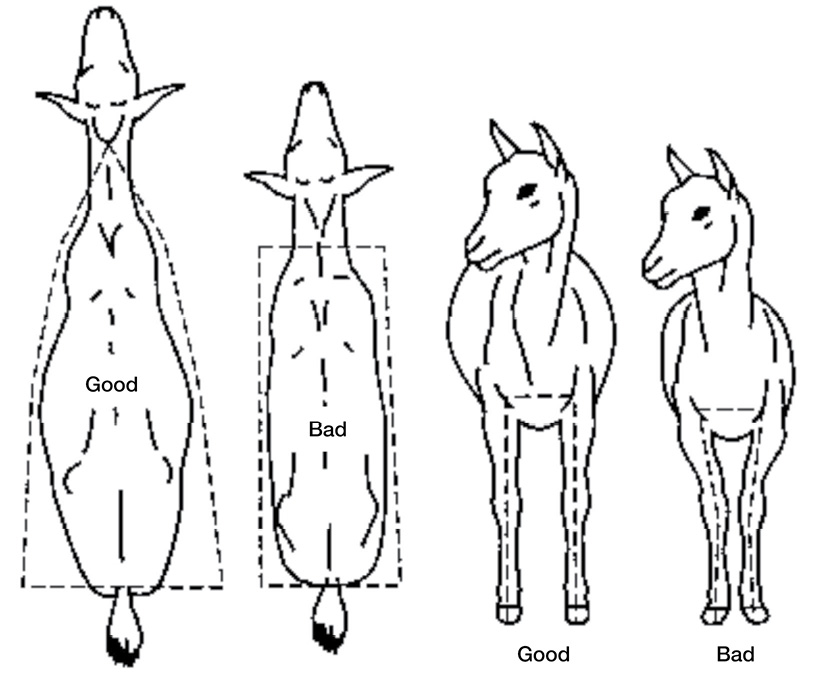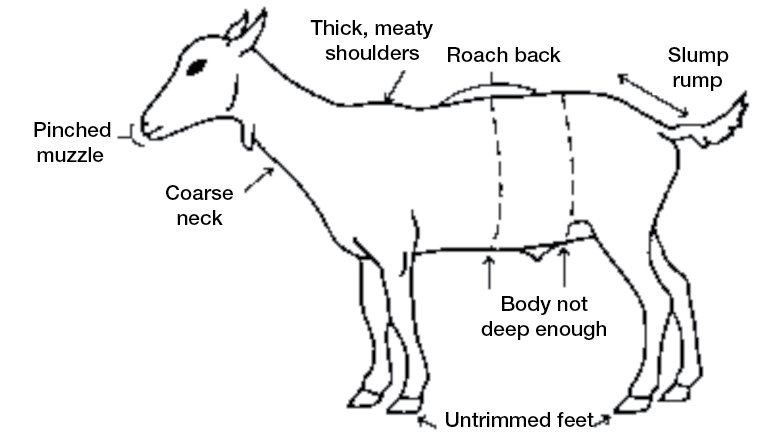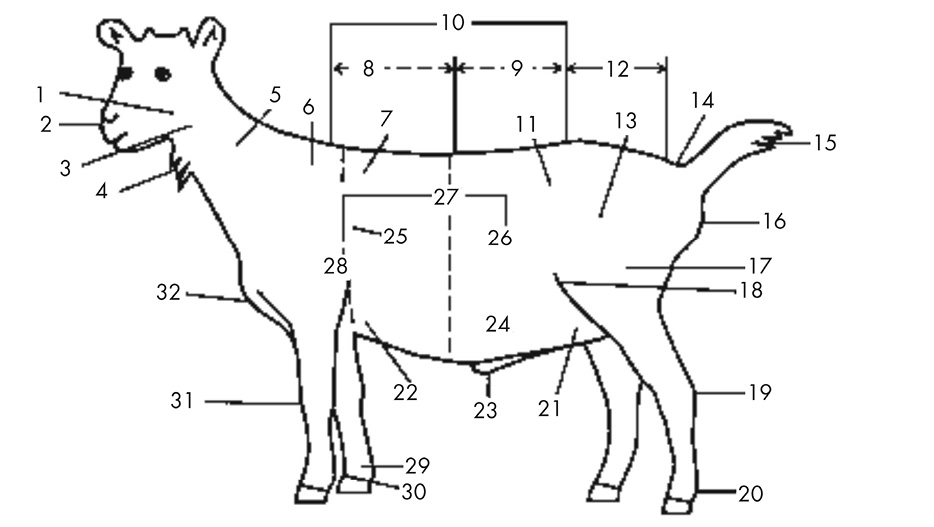Meat Goat Selection
“Meat goat” refers to goats grown for meat purposes in the United States today. In this context, the term is used as a breed, even though meat goats do not qualify as a breed in any technical sense. Older terms referring to meat goats to distinguish them from Angora and dairy goats include “brush goat,” “Spanish goat,” or “common goat.” Today, the term “meat goat” refers to any combination of goats used for meat production.
The South African Boer goat provided a new source of genetics for meat goat producers for nearly 30 years. Recently, the Kiko breed, and more recently the Spanish breed have become popular to use as an outcross with the heavily influenced Boer genetics.
In the past, the lack of a well-defined, distinct, and perhaps superior meat goat breed in the United States adversely affected meat goat production. However, genetic improvement through selection and breeding programs has produced a more desirable animal with a quality carcass, which improved demand for the product.
Selecting Meat-Type Goats
Growth rate and meat quality (muscle) are two of the more important considerations in a meat goat selection program. In selecting goats for meat production, also consider—
- adaptability to environmental and production conditions
- reproductive rate
The best way to increase adaptability is to select breeding stock from animals maintained under the same natural conditions in which their offspring will be raised. For example, heat-tolerant goats are best selected for production in hot climates.
Reproductive efficiency is a major factor contributing to efficient and profitable meat production, but it is relatively difficult to select for because of low heritability. Manage the breeding herd to increase reproductive efficiency. Select for twinning rate, and cull nonproducing does for best results. Cull animals that do not meet high reproductive performance criteria.
Selecting goats for growth rate should be relatively easy because of the fairly high heritability of growth traits. Base growth rate selection on higher post weaning gains or yearling weights. Goats selected for their increased growth rate will typically also produce increased lean muscle yield and thereby better meat quality.
Selecting for growth rate, reproductive efficiency, and environmental adaptability will greatly improve production efficiency (pounds of production per doe bred) and the likelihood of making a profit. Improvement of meat-type goats based on production alone can easily be achieved if good records are maintained. Progressive producers will select replacements based upon records using these guidelines and a strict culling process for those animals that fail to carry economically important traits.
Visual Selection of Meat Goats
Body Types

Poor Conformation

Parts of a Meat Goat

- Jaw
- Muzzle
- Throat
- Wattle
- Neck
- Withers
- Crop
- Chine
- Loin
- Back
- Hipbone
- Rump
- Thurl
- Tail head
- Tail
- Pin bone
- Thigh
- Stifle
- Hock
- Dew claw
- Rear flank
- Fore flank
- Sheath
- Belly
- Fore rib
- Rear rib
- Barrel
- Heart girth
- Pastern
- Hoof
- Knee
- Chest
Publication 2782 (POD-06-22)
Reviewed by Dean Jousan, PhD, Associate Extension Professor, Animal and Dairy Sciences. Written by R. Kipp Brown, Extension Livestock Coordinator (retired). Adapted from publications by the Texas A&M Extension System.
The Mississippi State University Extension Service is working to ensure all web content is accessible to all users. If you need assistance accessing any of our content, please email the webteam or call 662-325-2262.



